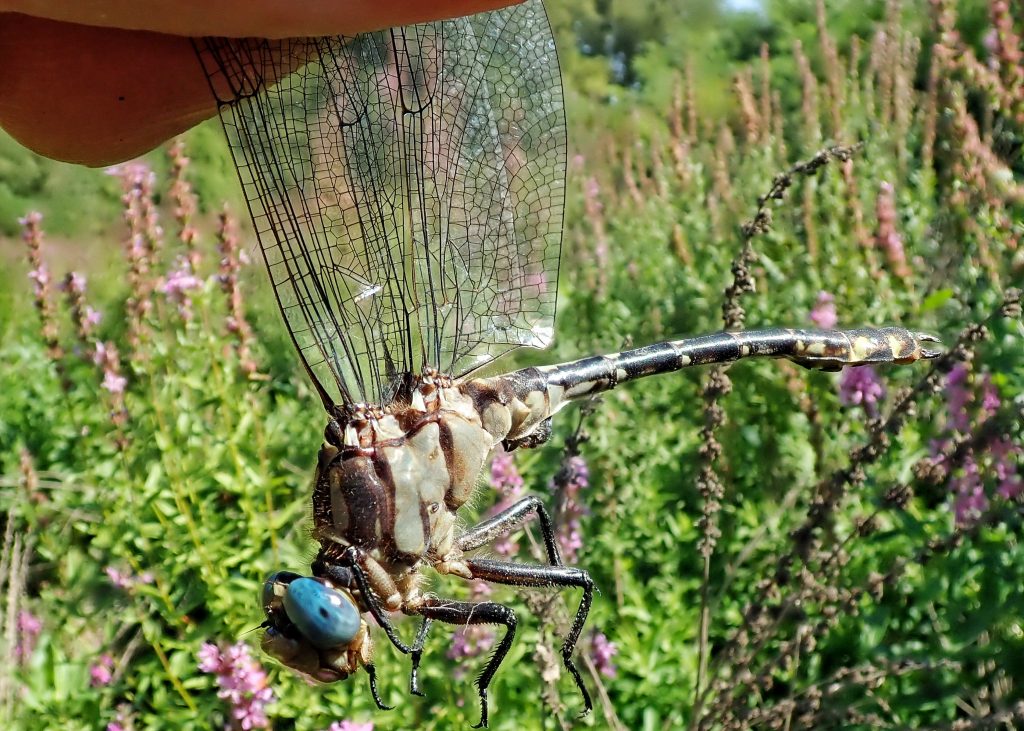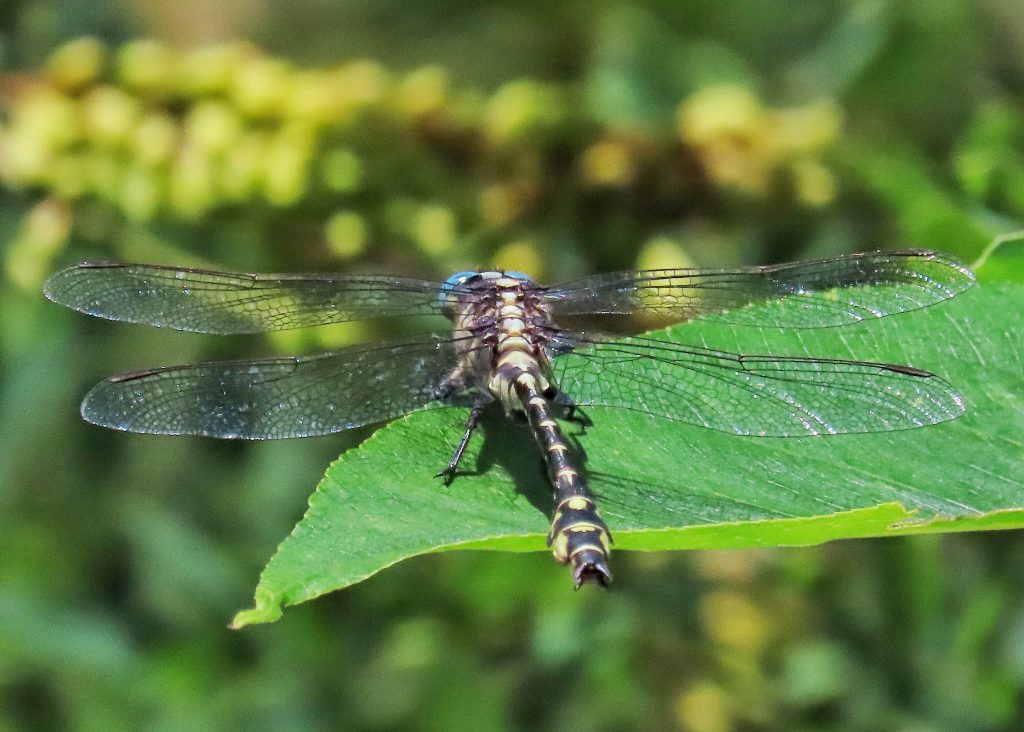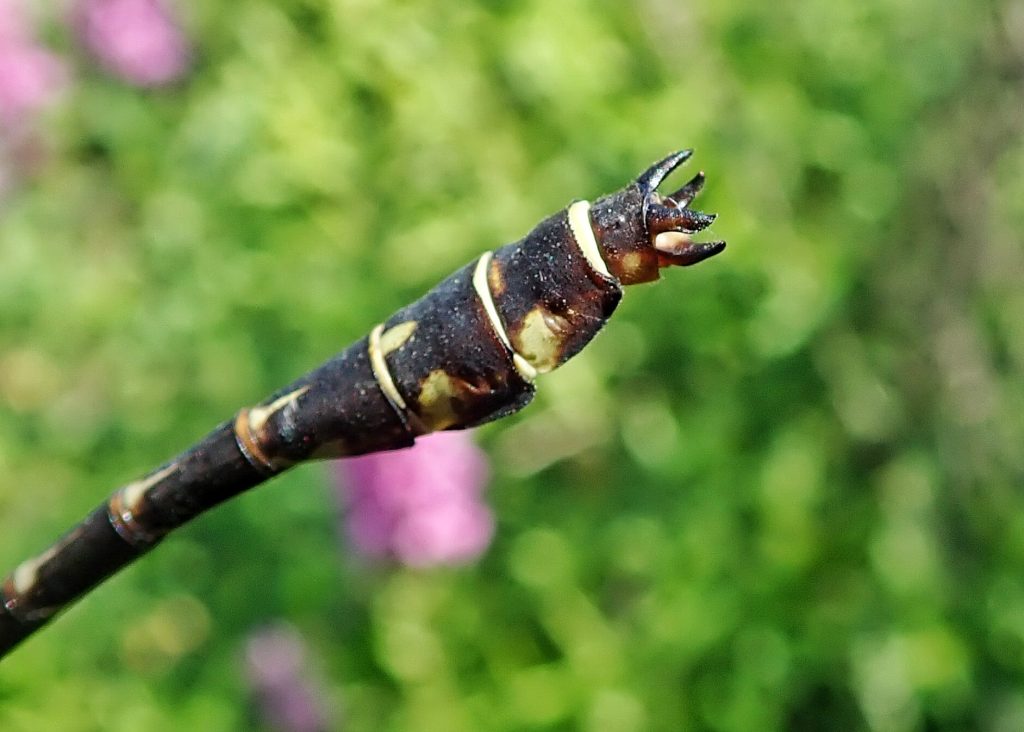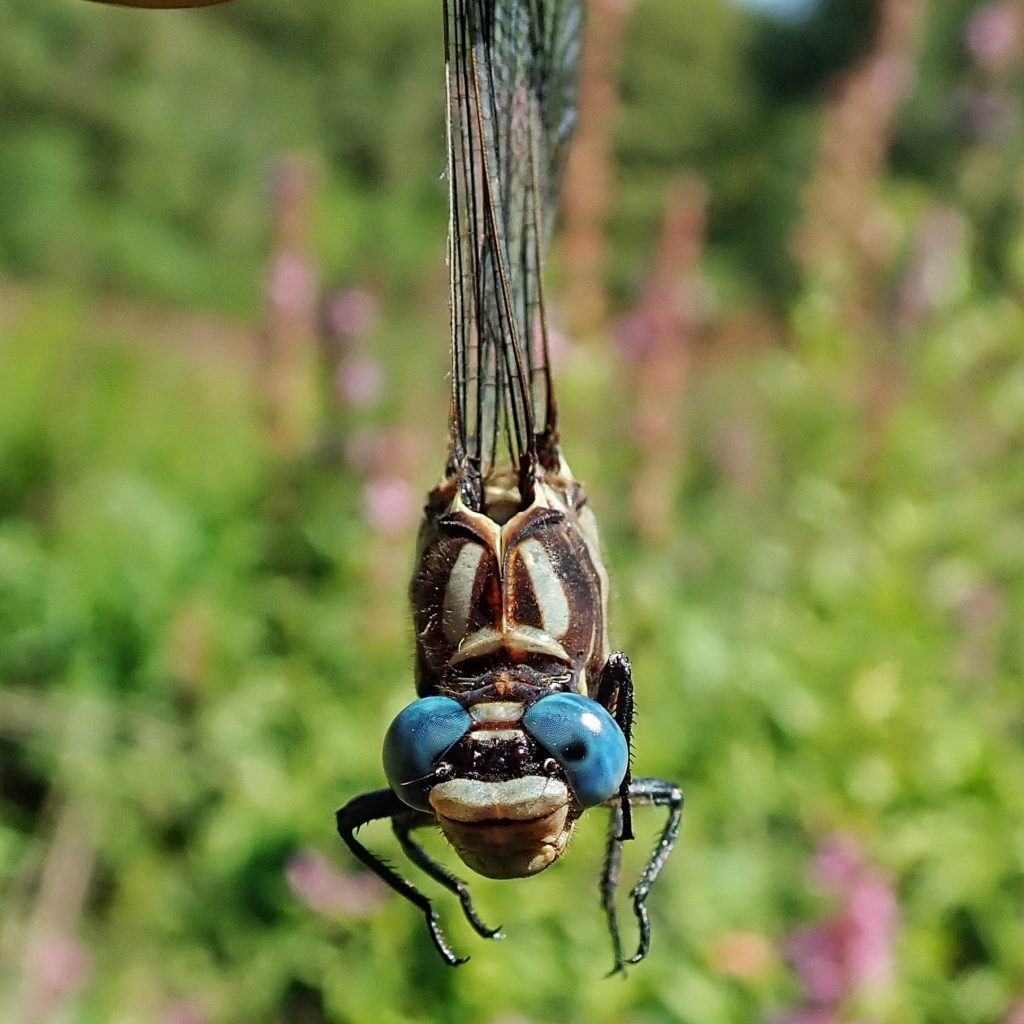
These dragonflies are members of the family Gomphidae (clubtails), so called because the end of the abdomen widens into a club, which is more noticeable on males than females due to the bulkier abdomens of the females. Other families, most notably the Macromiidae (river cruisers) in our region, have thickened terminal ends to the abdomen, but none of their clubs are as prominent as the clubtails. Clubtails also have widely separated, blue, gray, or green eyes. The only other family with completely separated eyes are the Petaluridae (petaltails), and their eyes are brown.
Members of the genus Stylurus are known colloquially as the hanging clubtails for their propensity to hang vertically from vegetation, whereas most clubtails perch horizontally, often on rocks or the ground. Having said that, Stylurus olivaceus will also occasionally perch horizontally, as shown in the picture below.

The sides of the thorax of an Olive Clubtail are, as might be expected, olive (although they become grayer with age), with only a thin black line for markings. The top of the thorax has an olive triangular mark, and the front has an olive u-shaped stripe. The abdomen is mostly black with narrow, pointed yellow markings along the median. The sides of the club are yellow, and the terminal segment (S10) is unmarked black. The eyes are bright blue.
In our region this species is most similar to Phanogomphus kurilis (Pacific Clubtail) and Gomphurus lynnae (Columbia Clubtail). But they are easily differentiated because these 2 species have black stripes marking the thorax.
Like all clubtails, the larvae of Olive Clubtails are burrowers. They prefer mud bottomed rivers and streams. In our region they are found primarily along the Columbia and Willamette Rivers, and some of their tributaries. But this fairly large (length 56-60mm) dragonfly can sometimes be found far from its natal stream. They are the latest flying clubtail, usually not found until late July, and they have been recorded into November. I once found one while walking the shoreline of the Columbia with Pam, on a cold and wet day in late October. It allowed me to pick it up and show it to a group of kids and their parents, riding calmly on the palm of my hand, possibly grateful for my body heat.

http://nwdragonflier.blogspot.com/2012/11/olive-clubtail-stylurus-olivaceus-lower.html?m=1
https://registrelep.gc.ca/virtual_sara/files/cosewic/sr_olive_clubtail_0911_eng.pdf
Size- Length 56-60mm;
Habitat- Slow, mud bottomed rivers and streams
Range- Primarily along the Columbia and Willamette Rivers in our region. Some reports from se Oregon/sw Idaho.
Eats- Anything it can subdue
Flight Season- Late July to November
